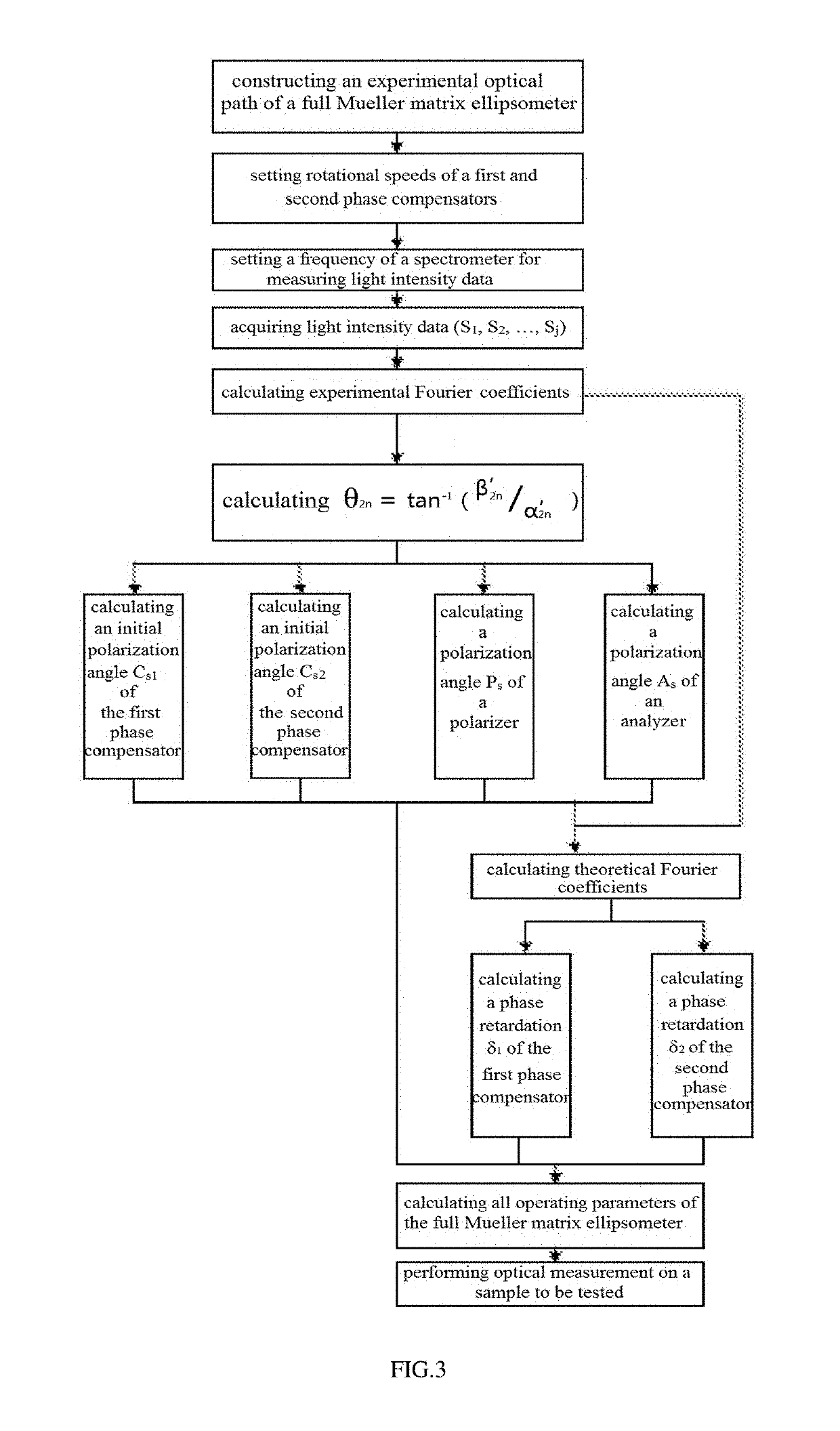Method for conducting optical measurement usingfull mueller matrix ellipsometer
- Summary
- Abstract
- Description
- Claims
- Application Information
AI Technical Summary
Benefits of technology
Problems solved by technology
Method used
Image
Examples
embodiment 1
[0027]A method for conducting optical measurement with a full Mueller matrix ellipsometer according to Embodiment 1 of the present invention may comprise the following steps:
[0028]step 1: referring to FIG. 1, constructing an experimental optical path of a full Mueller matrix ellipsometer. The experimental optical path may include a light source 1, an annular mirror 2, a pinhole 3, a first off-axis parabolic mirror 4, a polarizer 5, a first phase compensator 6, a first plane mirror 7, a sample stage 8, a second off-axis parabolic mirror 9, a third off-axis parabolic mirror 10, a second plane mirror 11, a second phase compensator 12, an analyzer 13, a fourth off-axis parabolic mirror 14, a spectrometer 15 and a terminal 16. An isotropic and uniform reference sample is carried on the sample stage 8. The experimental optical path of the full Mueller matrix ellipsometer, which can be self-calibrated through total regression, may have the following optical process:
Sout=MAR(A′)R(−C2)Mc2(δ2...
embodiment 2
[0068]Referring to FIG. 3, the difference between the total regression self-calibrated full Mueller matrix ellipsometer according to the embodiment 2 of the present invention and the total regression self-calibrated full Mueller matrix ellipsometer according to the embodiment 1 of the present invention lies in that: the total regression self-calibration method of the total regression self-calibrated full Mueller matrix ellipsometer according to the embodiment 2 of the present invention may further comprise the following steps:
[0069]obtaining respective θ2n based on respective experimental Fourier coefficients α′2n, β′2n, where θ2n is an intermediate parameter defined for the convenience of calculation;
[0070]obtaining an initial polarization angle Cs1 of a first phase compensator based on the respective θ2n;
[0071]obtaining an initial polarization angle Cs2 of a second phase compensator based on the respective θ2n;
[0072]obtaining a polarization angle Ps of a polarizer based on the res...
PUM
 Login to View More
Login to View More Abstract
Description
Claims
Application Information
 Login to View More
Login to View More - R&D
- Intellectual Property
- Life Sciences
- Materials
- Tech Scout
- Unparalleled Data Quality
- Higher Quality Content
- 60% Fewer Hallucinations
Browse by: Latest US Patents, China's latest patents, Technical Efficacy Thesaurus, Application Domain, Technology Topic, Popular Technical Reports.
© 2025 PatSnap. All rights reserved.Legal|Privacy policy|Modern Slavery Act Transparency Statement|Sitemap|About US| Contact US: help@patsnap.com



